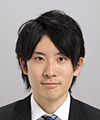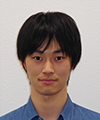 |
|||||||||||||||||||||||
|
|
|||||||||||||||||||||||
|
Feature Articles: Ultrahigh-speed Transmission Technology to Support High-capacity Communications Infrastructure of the Future Vol. 17, No. 5, pp. 34–39, May 2019. https://doi.org/10.53829/ntr201905fa5 Toward Terabit-class Wireless Transmission: OAM Multiplexing TechnologyAbstractNTT is researching and developing technology with the aim of achieving terabit-class wireless transmission that achieves the next generation of 5G (fifth generation). In particular, we are investigating orbital angular momentum (OAM) multiplexing transmission technology utilizing the OAM of electromagnetic waves as a new spatial multiplexing technology capable of transmitting multiple radio waves at the same time using the same frequency band. In an experiment on OAM multiplexing transmission using the 28-GHz band, we successfully demonstrated the world°«s first 120-Gbit/s wireless transmission. This article introduces the details of this technology. Keywords: high-capacity wireless transmission technology, OAM multiplexing, OAM-MIMO multiplexing 1. IntroductionThe coming 5G (fifth generation) will accelerate the use of wireless communications in all fields including connected cars, virtual reality/augmented reality, and high-definition video transmission. Mobile traffic is expected to increase by 1.5 times annually, and from such a trend, it is expected that wireless transmission at the hundreds-of-gigabits to the terabit class will be necessary in the 2030s. To provide for the ever-increasing demand for wireless communications, NTT is researching and developing technology with the aim of achieving terabit-class wireless transmission. There are three directions that can be taken to increase capacity in wireless communications: increasing the spatial multiplexing*1 order, broadening the transmission bandwidth, and increasing the modulation level (Fig. 1).
Of these, the direction involving increasing the modulation level is already reaching the limit. For example, to obtain twice the capacity of 1024QAM (quadrature amplitude modulation), which transmits 10 bits of information at a time, it is necessary to carry out one million QAM modulation to transmit 20 bits of information at a time. Consequently, it is difficult to achieve large capacity with this approach. NTT is taking the approach of broadening the transmission bandwidth using the quasi-millimeter wave*2 band and increasing the spatial multiplexing order through the use of a new principle based on electromagnetic waves having orbital angular momentum (OAM)*3.
2. Principles of OAM multiplexing transmission and NTT’s new transmission technologyIn this section, we explain OAM multiplexing transmission and introduce a new wireless transmission technology developed by NTT. 2.1 OAM multiplexing transmissionOAM multiplexing transmission is a technique to increase the number (multiplexing number) of data signals to be transmitted at the same time by transmitting different signals using radio waves having different OAM modes [1, 2]. OAM is a property of electromagnetic waves expressing phase rotation on the vertical plane in the propagation direction. The number of phase rotations is called an OAM mode. When an electromagnetic wave has this OAM property, the trace of the same phase takes on a helical shape in the direction of propagation (Fig. 2). For example, the trace of the same phase in OAM mode 1, OAM mode 2, and OAM mode 3 is shown in Fig. 2(a).
Radio waves having this OAM property cannot be received without a receiver having the same number of phase rotations at the time of transmission. For this reason, if multiple radio waves having different OAM modes are superposed, they can eventually be separated without mutual interference as long as there is a receiver that can receive radio beams with the same phase rotations corresponding to each OAM mode. For instance, an example is shown in Fig. 2(b) where different signals are put on OAM modes 1, 2, and 3 and transmitted simultaneously. Technology for transmitting multiple data signals using this feature is called OAM multiplexing transmission technology. Research on radio wave OAM dates back to the beginning of the 20th century. More recently, with the maturing of large-capacity transmission technologies using high-frequency bands in the 2010s, OAM multiplexing transmission in the millimeter-wave band has been attracting attention. An example of a recent achievement is a demonstration at the University of Southern California in the United States of 32-Gbit/s transmission using the 28-GHz band in 2014 and the 60-GHz band in 2016 [3, 4]. 2.2 OAM-MIMO (multiple-input multiple-output) wireless multiplexing transmission technologyIn theory, the OAM mode order (number of phase rotations) can be infinitely increased, so the spatial multiplexing order can be infinitely increased by OAM multiplexing transmission. However, radio waves with the property of OAM have the characteristic such that the electric energy diverges spatially as the propagation distance becomes larger as the OAM mode becomes higher. Thus, there is a practical limitation to the use of the higher order OAM modes to increase the spatial multiplexing order. NTT has devised OAM-MIMO multiplexing transmission technology that integrates the widely used MIMO*4 technology in order to efficiently increase the spatial multiplexing order while overcoming the practical limitation [5]. The devised OAM-MIMO multiplexing transmission technology allows the usage of the same OAM modes. In particular, multiple sets of low OAM mode signals are simultaneously transmitted to address the divergence issue of higher OAM modes. The nature of OAM multiplexing that generates multiple independent channels among different OAM modes is still applicable. At the same time, the MIMO concept is exploited to increase the number of concurrently transmitted data streams. By properly exploiting MIMO technology, it is possible to separate signals between multiple sets of the same OAM modes while maintaining noninterfering properties between different OAM modes. A configuration example of OAM-MIMO multiplexing transmission technology is illustrated in Fig. 3. This figure shows an example in which a total of 11 multiplexing transmissions to be described later are performed. The left figure represents four uniform circular array antennas (UCAs) concentric with one in the center. UCAs #1 to 4 can generate OAM modes –2, –1, 0, 1, and 2, respectively, and five OAM modes can be generated and transmitted. The antenna in the center (described as UCA #0 for notation convenience) is used for the axis alignment and/or transmission of OAM mode 0. The signals multiplexed in the same mode are separated by MIMO technology at the receiver.
3. World-first transmission of over 100 Gbit/s using 28-GHz bandTo demonstrate the effectiveness of the OAM-MIMO multiplexing transmission technology, NTT has developed a transmitter and receiver that uses a bandwidth of 2 GHz in the 28-GHz band (Fig. 4). The developed transmitter/receiver consists of four concentric UCAs with different radii and one antenna in the center. Each UCA is composed of 16 antenna elements and can transmit and receive radio waves in 5 OAM modes. Simultaneous transmission of a total of 21 data signals is possible using these antenna elements. Although frequency bands under 6 GHz have been used in the past, the development of equipment that can simultaneously transmit up to 21 signals in quasi-millimeter-wave and higher frequency bands is a world first.
The configuration of this transmitter/receiver and the experimental setup are shown in Fig. 5. On the transmitter side, signals are generated and converted into analog intermediate frequency (IF) band signals using arbitrary waveform generators that work as digital-to-analog converters. IF signals are inserted into the developed transmitter. The input signal is transmitted by each UCA via an OAM mode generation circuit after up-converting IF signals to the 28-GHz band. On the receiver side, the wireless signals received by each UCA are separated into each OAM mode by OAM mode separation circuits, and then separated signals are down-converted into IF band signals. Those IF band signals are converted to digital signals by the digital oscilloscope, which is used as an analog-to-digital converter. Finally, the digital signals are processed to extract each transmitted signal. Here, the OAM mode generation circuit and the OAM mode separation circuit were respectively achieved by designing a 5 × 16 and a 16 × 5 wideband Butler matrix circuit. Five OAM modes can be simultaneously generated and separated by the wideband Butler matrix circuits.
Using this transmitter/receiver, we conducted a transmission experiment at a distance of 10 m in a shield room. Multiple data signals were wirelessly transmitted using multiple OAM multiplexed radio waves. We confirmed that wireless transmission was possible according to the OAM principle. In addition, we succeeded in the world-first large-capacity wireless transmission of 120 Gbit/s [6] by multiplexing 11 data signals of 9.6 to 13.3 Gbit/s. We also successfully implemented the corresponding signal processing technology that can handle such multiplexed signal transmission and reception. 4. Expectation for broadband technologyTechnology to utilize wide frequency bands is currently being studied. For example, the mixer integrated circuit (IC) and module in the 300-GHz band shown in Fig. 6 make it possible to both expand the transmission bandwidth and improve the signal-to-noise ratio, which had been a problem in the conventional 300-GHz band radio front end [7]. We used this device to carry out 100-Gbit/s transmission in one stream using a wide bandwidth of 25 GHz. By combining such wideband IC technology and OAM multiplexing transmission technology, we can expect to achieve even larger capacity.
5. Future workIn order to use OAM multiplexing technology in a real environment, it is necessary to address practical issues that occur in the real environment and to conduct experimental evaluations in various environments. We are now preparing to verify the feasibility of OAM multiplexing in the field by conducting outdoor wireless transmission experiments. In addition, we will utilize frequency bands that can use wider bandwidths and lead research and development toward realizing terabit-class wireless communications. References
|
|||||||||||||||||||||||




















